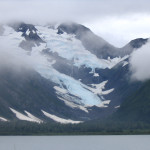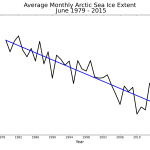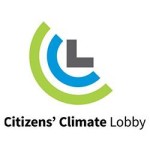 “Warming of the climate system is unequivocal.” This was the conclusion of the most recent IPCC 5th Assessment Report (AR5). Also, human activity has been “the dominant cause of the observed warming since the mid-20th century.” There has been no pause.
“Warming of the climate system is unequivocal.” This was the conclusion of the most recent IPCC 5th Assessment Report (AR5). Also, human activity has been “the dominant cause of the observed warming since the mid-20th century.” There has been no pause.
The climate is warming and we are the dominant cause, primarily through activities such as the burning of fossil fuels and deforestation that emit huge amounts of CO2 into the atmosphere and oceans. The data are clear on this conclusion.
So why do politicians (universally, Republican politicians) claim the climate has not warmed? The facts prove them wrong. Unequivocally. Undeniably. The year 2016 just set the new record for warmest year, surpassing the previous record year of 2015 (which surpassed the previous record year of 2014). All of the hottest years have been recent years (aka, since the date lobbyists like to claim started a period of “no warming”). How someone can argue the climate isn’t warming when we keep setting climate heat records is a big question, one whose answer is obvious.
In any case, climate deniers desperately need the “pause” talking point, no matter how unsupportable the notion. In 2015, a scientific study was published that put the rest the false idea of a pause. Led by NOAA scientist Thomas Karl (and co-authored by nine other scientists), the study showed that any slowing was an artifact of changes in measurement methods and not a reflection of actually decreases in the rate of warming.
Republican lawmakers reacted to the Karl study by attacking the authors. Senator Ted Cruz (R-TX) and House Representative Lamar Smith (R-TX) and other similarly fossil fuel-dependent politicians began harassment campaigns against the scientists involved, supported with talking points written by fossil fuel and libertarian lobbying groups/campaign contributors.
And now a new scientific study by a completely independent group of scientists has confirmed what the earlier study had effectively demonstrated – there was no pause, and the earlier scientists were correct in their analysis. The new study just published in Science Advances by UC-Berkeley researcher Zeke Hausfather confirms that the Karl analysis was correct. Further, Hausfather and his co-authors demonstrate that other researchers should reassess their own data sets accordingly.
Which gets us back to the pause that was not a pause. This talking point was invented by the denier lobbying industry through several steps of cherry picking. First, they chose 1998 as the starting date because it was a year of a huge spike in temperatures due to the strongest El Nino event in recent history. That artificially high spike was, not surprisingly, followed by “normal” high temperatures that appeared less because of the selected starting point. Shifting the start date one year forward or back eliminated the faux pause effect. Second, they use only a single satellite data set, the only one that gave them a trend that they could misuse to show their preferred narrative. The fact that the data set and investigators are highly adjusted and uncertain (and, arguably, irrelevant) may also explain the sometimes questionable choices made in its interpretation. Third, they choose to ignore all the surface level temperature data sets that inconveniently for them refute their conclusions.
In addition, there is the fact that there are long-term trends, and there are short-term variations in those trends. We had several years of events that tend to slow warming (e.g., La Nina) with fewer events that increase warming. In the last few years we’ve seen more “speed up” events (El Nino), which has helped the records set in 2014, 2015, and 2016 spike even warmer (i.e., they would have have been warmer even without the El Nino, but the El Nino pushed the spikes even higher, just as they did in the 1998 event that deniers like to cherry pick to start their “it hasn’t warmed” falsehood.
So there was no pause. The newest data confirm what we already new. The climate system is warming. Unequivocally. Undeniably. As John Abraham notes in his Guardian article:
Finally, and for those who read my posts regularly, I am sounding like a broken record. Global warming is happening, it never stopped, it never paused, and the models have gotten it right.
As he notes, and has been offered repeatedly on this page, humans are warming the climate. As with all other previous problems identified, it’s time to take responsibility and do something about it.
[Cross-posted from The Dake Page]
David J. Kent is an avid science traveler and the author of Lincoln: The Man Who Saved America, now available. His previous books include Tesla: The Wizard of Electricity and Edison: The Inventor of the Modern World (both Fall River Press). He has also written two e-books: Nikola Tesla: Renewable Energy Ahead of Its Time and Abraham Lincoln and Nikola Tesla: Connected by Fate.
Check out my Goodreads author page. While you’re at it, “Like” my Facebook author page for more updates!
Follow me by subscribing by email on the home page. Share with your friends using the buttons below.



 It’s been a big week in climate change, in more ways than one. This is especially true for President Obama. First he went to New Orleans, and then he spent several days in Alaska. That’s a big deal for climate communication.
It’s been a big week in climate change, in more ways than one. This is especially true for President Obama. First he went to New Orleans, and then he spent several days in Alaska. That’s a big deal for climate communication. We’ve talked about several of the tactics used by climate deniers to intentionally mislead the public. This past week provided a prime example of one tactic – intentionally lying about what a study says. Let’s take a closer look at how this works.
We’ve talked about several of the tactics used by climate deniers to intentionally mislead the public. This past week provided a prime example of one tactic – intentionally lying about what a study says. Let’s take a closer look at how this works. Earlier this year I posted a series of articles explaining what scientific peer-review is, and what it isn’t. The series was very popular so I’ve decided to create this single post that links to all the previous ones.
Earlier this year I posted a series of articles explaining what scientific peer-review is, and what it isn’t. The series was very popular so I’ve decided to create this single post that links to all the previous ones. This week the Citizens’ Climate Lobby (CCL) held its 6th annual International Conference in Washington, DC. The keynote speaker was Dr. Katharine Hayhoe, an atmospheric scientist at Texas Tech University in Lubbock, Texas. In addition to being a climate scientist, Hayhoe is an evangelical Christian, which generally would be irrelevant to the discussion except that she, with her husband, pastor Andrew Farley, wrote
This week the Citizens’ Climate Lobby (CCL) held its 6th annual International Conference in Washington, DC. The keynote speaker was Dr. Katharine Hayhoe, an atmospheric scientist at Texas Tech University in Lubbock, Texas. In addition to being a climate scientist, Hayhoe is an evangelical Christian, which generally would be irrelevant to the discussion except that she, with her husband, pastor Andrew Farley, wrote  It should go without saying that when you deny reality long enough, eventually reality makes you look foolish. Climate deniers have been denying the science behind man-made climate change for so long that they have lost even the illusion of credibility. They have become their own worst enemy, and as such have put themselves on a path of complete irrelevancy.
It should go without saying that when you deny reality long enough, eventually reality makes you look foolish. Climate deniers have been denying the science behind man-made climate change for so long that they have lost even the illusion of credibility. They have become their own worst enemy, and as such have put themselves on a path of complete irrelevancy.






